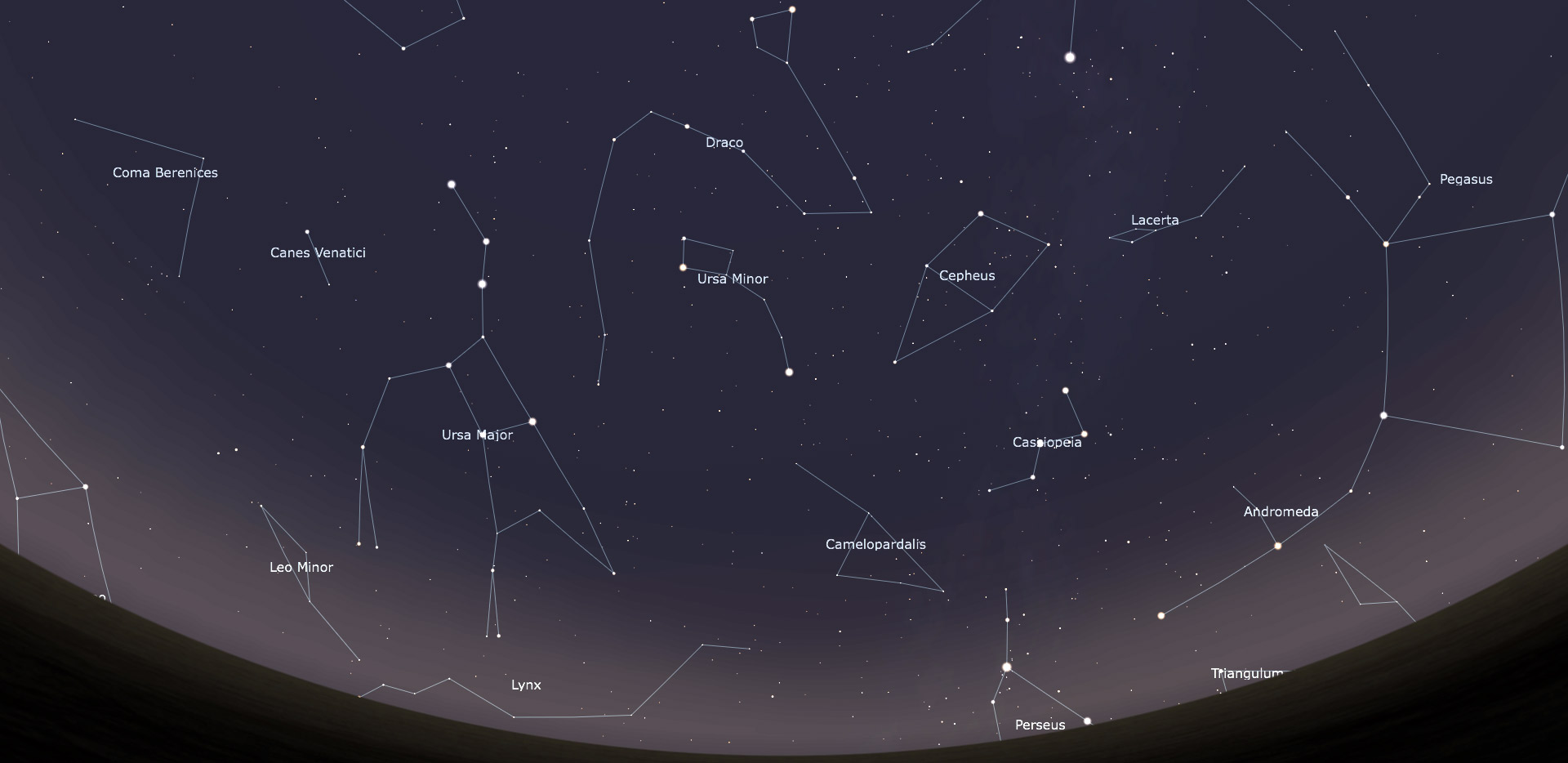
Camelopardalids Meteor Shower 2014
May 2014 :
Note: This article may contain outdated information
This article was published in the May 2014 issue of The Skyscraper and likely contains some information that was pertinent only for that month. It is being provided here for historical reference only.
The majority of the meteor showers we observe these days are centuries old. Some of the displays, like the Perseids and the Geminids, put on a good annual show. Then there are the minor showers that only produce ten or less meteors per hour at best. These particles, stripped off the comet’s surface by the solar wind, become a meteor stream spread out along the comet’s orbit.
In 2012, experts began to predict we would experience a “storm” of meteors during May 2014 from a tiny “dirty snowball” called Comet 209P/LINEAR. However, as the date has neared, predictions have been downgraded. While a minor storm of shooting stars cannot be ruled out, there seems to be some agreement that we could expect rates similar to those for the Perseids and Geminids (about 50-100 meteors per hour at peak) between 2:00 and 4:00 a.m. on May 24. Do not expect high rates like we observed during the Leonid meteor storm back in 2001. But be prepared just in case something spectacular happens.
The radiant point, the area of sky from where the meteors appear to originate, is in the constellation of Camelopardalis, the giraffe. If you can find Polaris, you’ll be looking in the right direction— north. Camelopardalis is between Polaris and the northern horizon and between Ursa Major and Cassiopeia at 2:00 a.m. Camelopardalis is circumpolar, so it will be visible all night.
What can we expect here in southern New England? Since the meteor stream of particles is expected to be very narrow, the Earth will sweep through it very quickly. However, we are in a good location on the Earth’s surface to see whatever transpires to best advantage. All the data indicates that the meteors will enter our atmosphere very slowly, at 40,000 miles per hour. Meteor experts predict that many of the meteors will be very bright fireballs.
The Moon phase will be a thin waning crescent, so it will not hamper observations.
Will the more conservative predictions come to fruition? Or will we experience a grand display of shooting stars during the early morning hours of May 24? I don’t know about you, but I’m going to pick a nice dark sky location to maximize my chances of observing whatever the Camelopardalids produce.
Live webcasts
If you're clouded out (like us) or can't get to an observing site during the expected peak, there are some observatories that will be broadcasting observations live.



